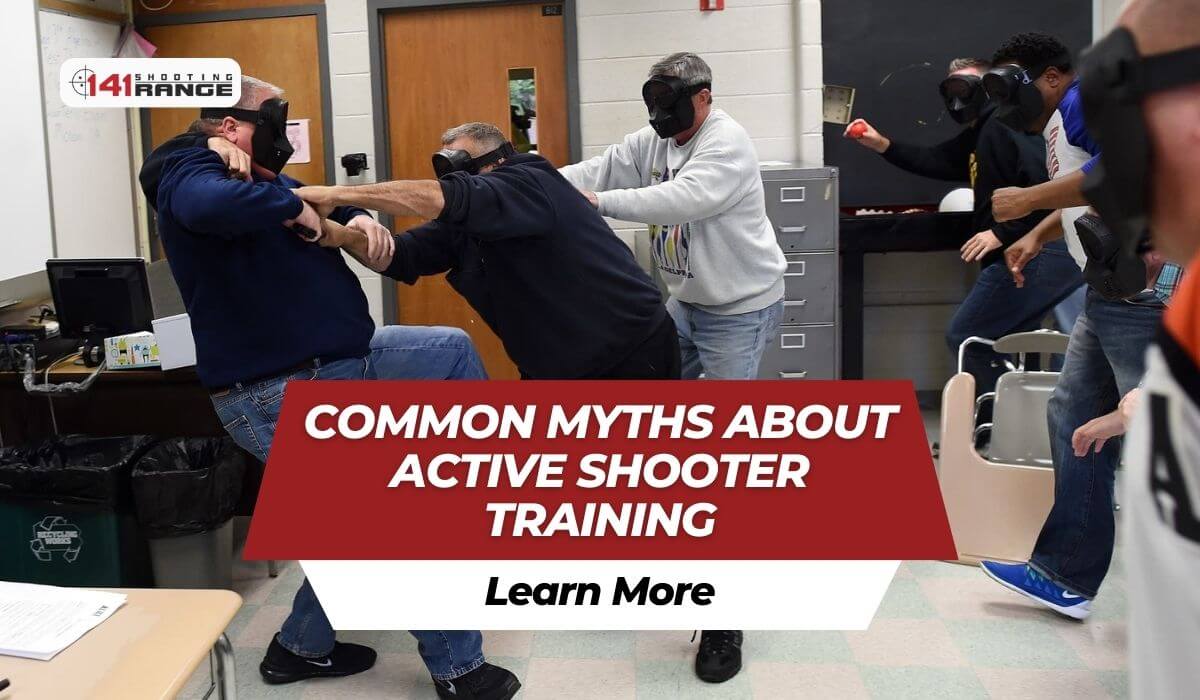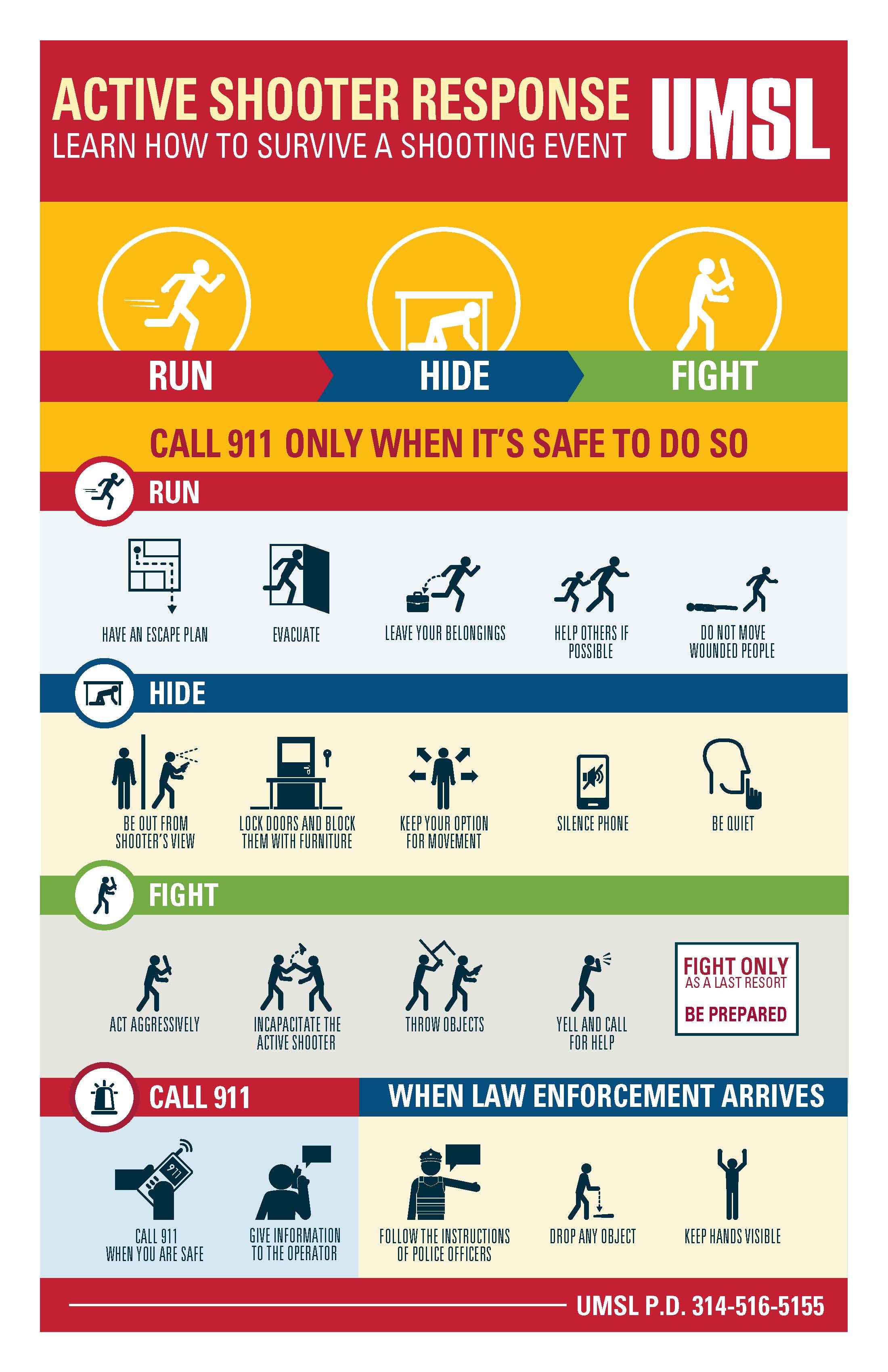Ensuring Public Safety with Advanced Active Shooter Training Techniques
Ensuring Public Safety with Advanced Active Shooter Training Techniques
Blog Article
The Essential Role of Energetic Shooter Training in Enhancing Emergency Situation Action Techniques in Various Settings
Energetic shooter training has arised as a basic element in refining emergency feedback methods across varied setups, from schools to business environments. By equipping people with customized understanding and skills, these programs not just prepare participants for potential situations however also promote a culture of recognition and partnership. However, the performance of such training rests on various aspects, including the certain context in which it is executed and the recurring dedication to enhancement. Exploring these dimensions discloses essential insights that might significantly affect readiness and reaction end results in the face of disconcerting hazards.
Importance of Active Shooter Training
In an era marked by boosting problems over public safety, the significance of active shooter training can not be overstated. As occurrences of weapon physical violence in public spaces continue to increase, organizations across different sectorsâEUR" schools, offices, and public venuesâEUR" are recognizing the necessity of preparing their workers and neighborhoods for such emergency situations. Active shooter training furnishes people with critical abilities and expertise to respond effectively in life-threatening situations, possibly lessening casualties and conserving lives.
The training not just concentrates on prompt response activities, such as emptying and safeguarding in position, but also promotes a culture of recognition and readiness. By taking part in reasonable simulations and discussions, individuals can identify prospective vulnerabilities within their setting and create techniques for mitigating threats. Such training enhances communication and control among team members and first responders, ensuring an extra unified method during situations.

Secret Components of Effective Training
Efficient active shooter training comprises several vital elements that improve preparedness and response capacities. Primarily, reasonable scenario-based simulations are crucial. These workouts submerse individuals in high-stress scenarios that simulate prospective energetic shooter events, permitting them to exercise decision-making and physical responses under stress.
Furthermore, training must consist of a thorough understanding of communication procedures. Participants ought to be skilled in how to relay important information to police and fellow individuals during an occurrence. This consists of using emergency signals and comprehending the hierarchy.
An additional essential element is the unification of psychological health understanding. Training must resolve the mental impact of energetic shooter circumstances, gearing up participants with coping strategies and resources to support their psychological well-being post-incident.
Additionally, routine correspondence course are essential to guarantee that abilities continue to be sharp and understanding is current. This constant education strengthens the relevance of readiness and promotes a society of security within companies.
Training for Various Atmospheres
Energetic shooter training have to be tailored to the certain environments in which individuals operate, as each setting presents unique challenges and dynamics. As an example, training in a corporate workplace will vary significantly from that in an institution, shopping center, or medical care facility. Each environment demands a personalized approach that takes into consideration aspects such as layout, population thickness, and i thought about this offered retreat routes.
In universities, training programs should stress lockdown procedures, interaction protocols with legislation enforcement, and techniques for shielding trainees. Conversely, in company settings, training might concentrate on evacuation strategies, identifying questionable behaviors, and making use of offered resources for self-defense or shelter-in-place scenarios.
Additionally, public locations like shopping centers or sporting events need extensive group management strategies, with an emphasis on quick response coordination among safety personnel and regional law enforcement.
In health care environments, training should attend to details susceptabilities, such as the presence of patients who may require instant support. By comprehending the distinctive features of each environment, organizations can develop effective training modules that enhance preparedness and enhance general safety and security, making certain that individuals are equipped to respond appropriately in varied crisis situations.

Structure a Culture of Awareness
Creating a culture of awareness is basic to boosting precaution in any type of atmosphere, as it empowers people to identify potential hazards and react proactively. This culture necessitates constant education, open interaction, and the combination of safety methods right into daily regimens.
Organizations ought to prioritize energetic shooter training as part of their overarching security strategy, making sure that all personnel comprehend the specific dangers related to their environment. Routine training sessions grow watchfulness and experience with emergency procedures, urging individuals to continue to be alert to unusual actions or situations.
Moreover, promoting a society of recognition includes developing an environment where reporting dubious activity is both urged and normalized. active shooter training. Staff members should really feel comfy sharing their concerns without fear of vengeance. This can be achieved with clear channels of communication and encouraging management
Additionally, engaging in area partnerships can heighten understanding past business borders, advertising a common responsibility for safety. Initiatives such as workshops, drills, and informative sessions can additionally boost cumulative alertness. Inevitably, constructing a society of recognition not just prepares people for possible situations but additionally strengthens the overall resilience of the organization versus dangers.
Examining Training Effectiveness
While routine get redirected here training sessions are critical for preparedness, assessing their effectiveness is equally essential to ensure that employees are equipped with the necessary abilities and knowledge to react suitably in case of an energetic shooter scenario. Analysis processes need to consist of both qualitative and measurable assessments to determine the effect of training on action abilities.
Surveys and responses from participants can offer valuable understandings into the training's relevance and applicability. In addition, carrying out useful drills and simulations permits companies to observe real-time decision-making and teamwork under stress. Examining the outcomes of these workouts assists identify staminas and areas for renovation.

Involving stakeholders, including police and emergency situation responders, in the assessment process can improve reliability and give an extensive point of view on training effectiveness (active shooter training). Inevitably, a systematic evaluation method guarantees that active shooter training stays a crucial part of a company's emergency feedback strategy, fostering a safer environment for all
Conclusion
Active shooter training is essential in fortifying emergency response techniques across diverse environments. By equipping individuals with the necessary abilities and expertise, such training boosts readiness and sychronisation during vital events. Tailored approaches for various setups ensure that specific vulnerabilities are dealt with, fostering a culture of awareness and continual education and learning. Eventually, the application and assessment of effective training programs contribute significantly to mitigating the effect of active shooter situations, thus securing lives and enhancing community resilience.
Report this page